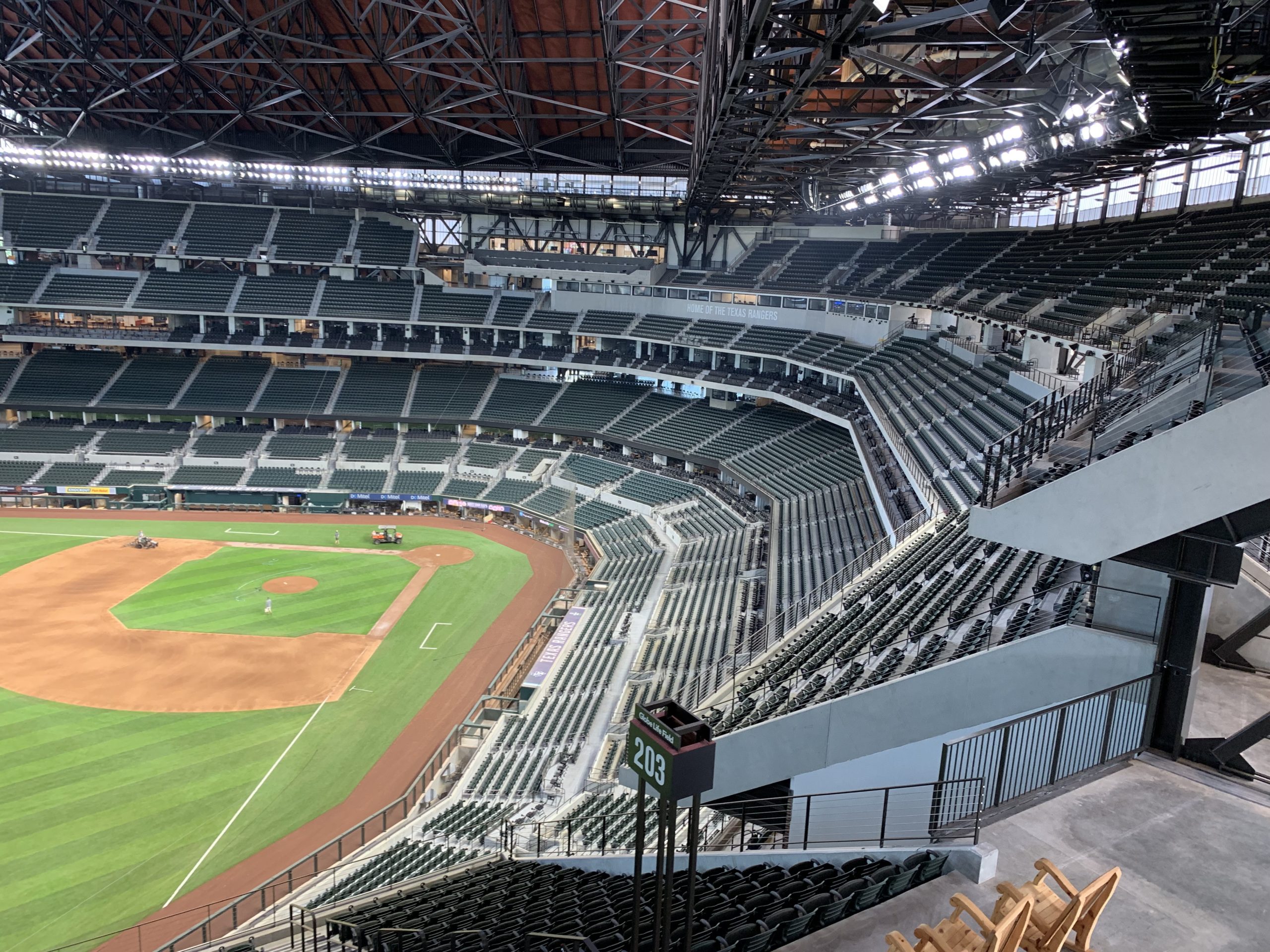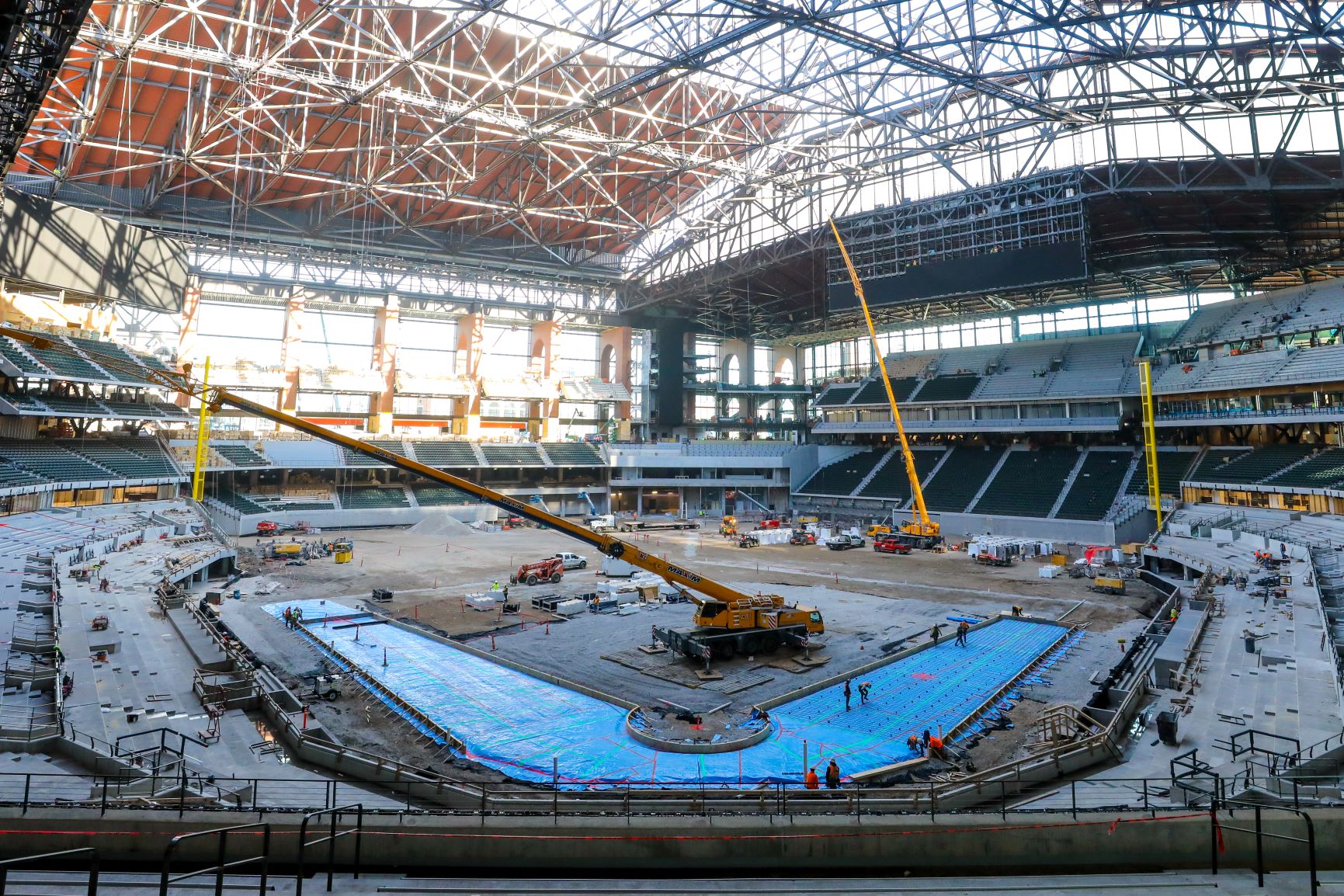
At least there will be less expense in watering the grass during those hot Texas summers.Īfter their disappointments in the 20 World Series, it's hard to say where the Texas Rangers are headed. One negative factor (necessitated by the need to keep the roof closed throughout the hot Texas summer) is the artificial turf: This is the first new MLB ballpark since Tropicana Field with fake grass. Being enclosed by a retractable roof, this field will presumably be much less subject to high winds than its predecessor was. Globe Life Field bears a few similarities to many similarities to the new home of the Braves, Truist (formerly SunTrust) Park. The signature architectural feature is the row of 18 tall brick arches that support the roof along the north side. Apart from the fact that the left field fence angles inward, the outfield layout (including the bullpens) is quite similar to Globe Life Park. There is much to like about Globe Life Field, including "meaningful" (as opposed to arbitrary) asymmetry in the outfield dimensions, conforming to the overall structural design. Of all the modern retractable-roof baseball stadiums in America ( Rogers Centre, Minute Maid Park, Chase Field, Miller Park, and Marlins Park), this one is unique in having a single movable panel. Speaking of elevation, the field is about 50 feet below ground level, and this design required a massive excavation effort. The bottom side is 131 feet above the field, and one would assume that the ground rules will award a home run to any batter who strikes the scoreboard. Another such challenge can be found in right field: a scoreboard that hangs from beneath the edge of the fixed portion of the roof, about 50 feet in front of the right field wall. Perhaps it's a challenge for sluggers to reach those seats with a long blast. In left field there are three small decks, with the upper-most one being weirdly elevated about 20 feet higher than it needed to be. Evidently, however, there are no economy-priced bleacher seats. In right field there are two large decks, presumably catering to budget-conscious fans. There seems to be a multi-level press box in that area.

The structural supports for the roof forced a number of discontinuities in the upper deck, most notably on the right side behind home plate. Yankee Stadium II is similar in this respect. The large second deck is separated from the first deck only by a thin layer of luxury suites, with no discernible overhang, and can almost be considered an extension of the first deck. ( Dodger Stadium pioneered this feature.) exemplifying the modern trend of segregating fans into as many distinct classes as is feasible, to maximize ticket revenue. There are supposedly seven tiers of seating sections in Globe Life Field, four decks and three luxury suite levels, including a ground-level section between the dugouts. About a half mile to the west stands the imposing AT&T Stadium, home of the Dallas Cowboys. Globe Life Field is located just south of its predecessor near Six Flags Over Texas, in the suburbs of Dallas-Fort Worth, Texas. At a total project cost of $1.2 billion, that seems like an awful waste of taxpayer resources. And thus, when the 2020 season (delayed by the coronavirus) finally begins, Globe Life Field will officially replace Globe Life Park after only 26 years of service for the Rangers (1994-2019). In 2016, a proposal to build a new stadium for the Rangers with fewer seats and more shade was floated, and after the usual political wrangling, construction began in mid-2018.

"BEEN THERE" (ahead of time): While visiting Globe Life Park in 2014, I parked very close to where the future Globe Life Field would be built. WORLD SERIES: 2020 (neutral site due to the coronavirus) ARTIFICIAL TURF: the first such MLB stadium since 1998.


 0 kommentar(er)
0 kommentar(er)
